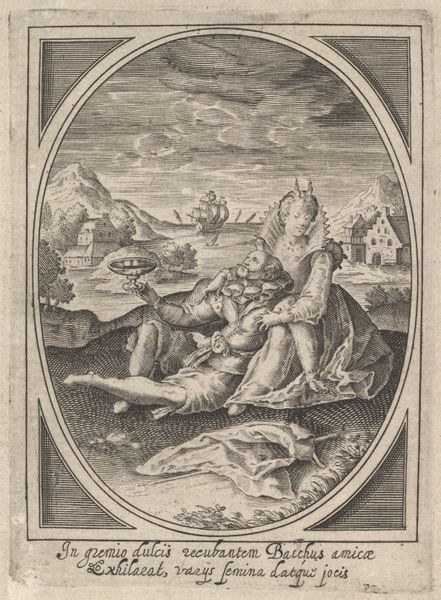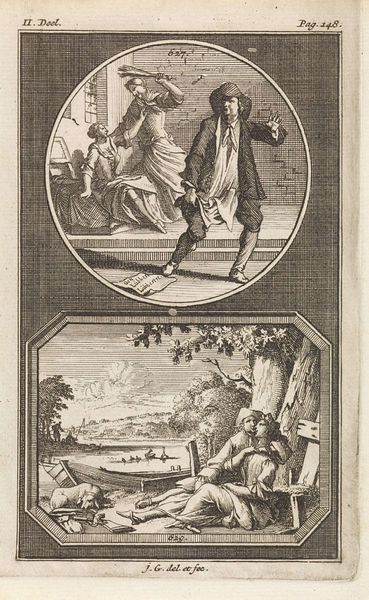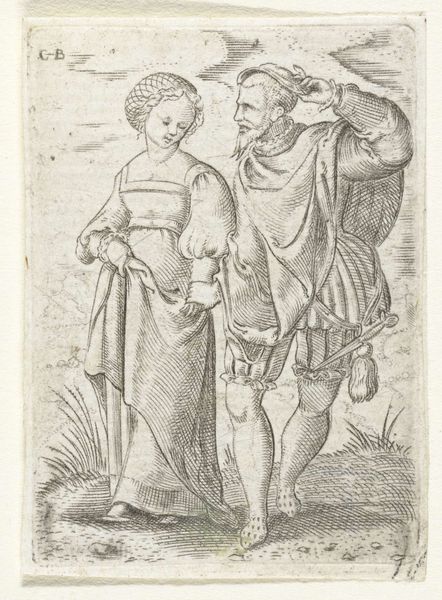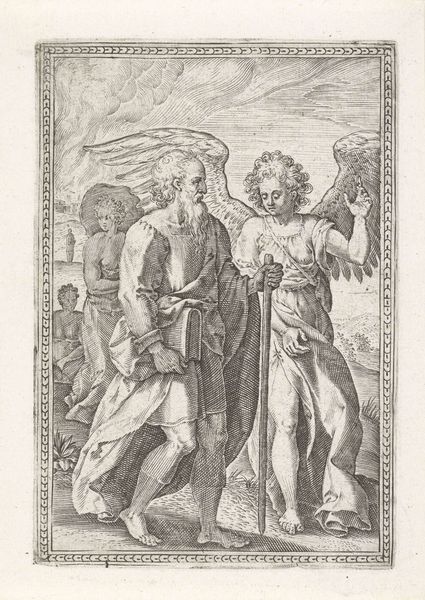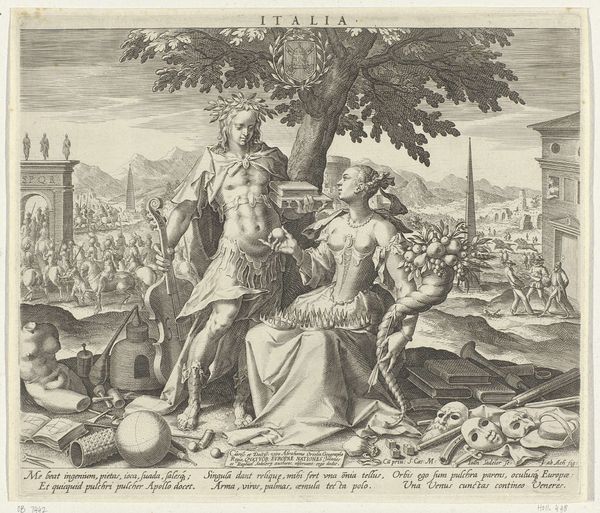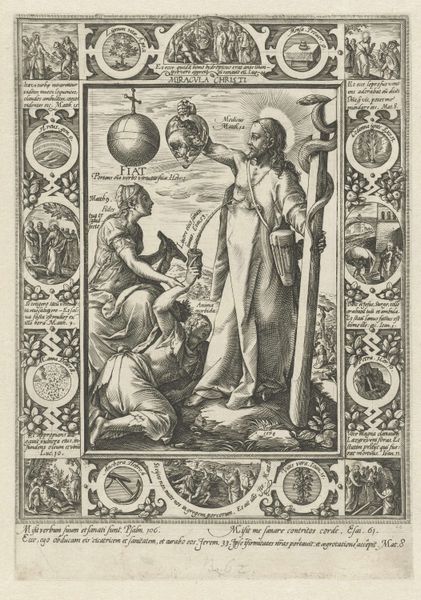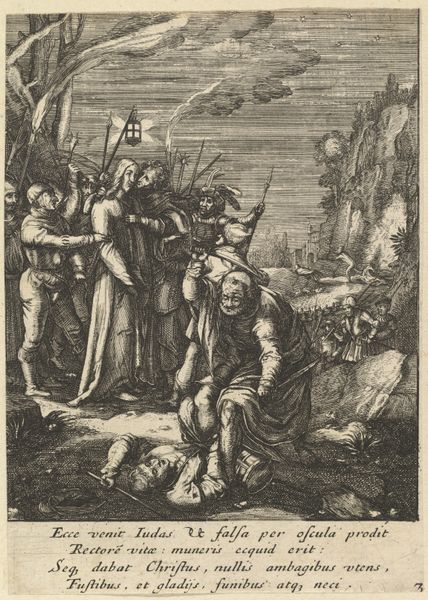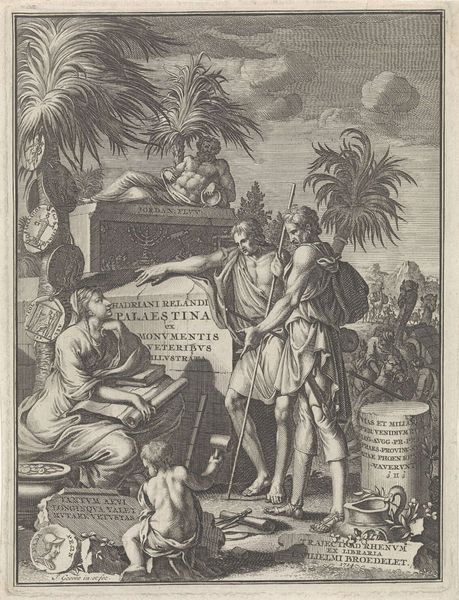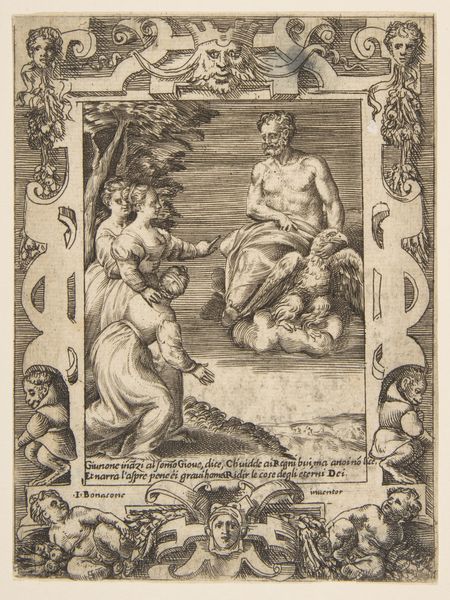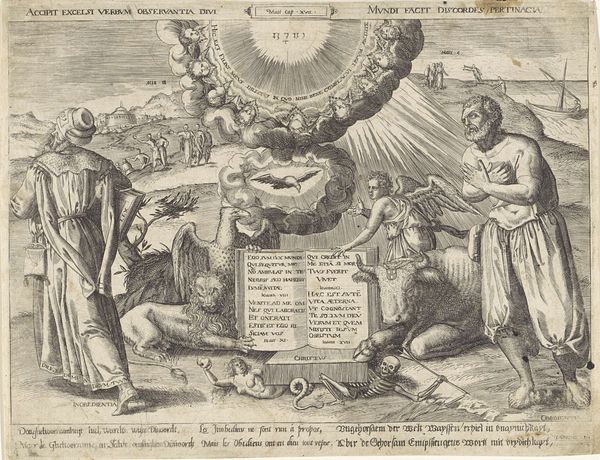
A man steps toward a woman who holds a goblet to her mouth, a watermill and mountains beyond, an oval composition 1585 - 1621
0:00
0:00
drawing, print, engraving
#
portrait
#
drawing
#
baroque
# print
#
landscape
#
figuration
#
genre-painting
#
engraving
Dimensions: Sheet: 5 x 3 7/8 in. (12.7 x 9.8 cm)
Copyright: Public Domain
Editor: We’re looking at an engraving from the early 17th century, sometime between 1585 and 1621, titled "A man steps toward a woman who holds a goblet to her mouth…" attributed to Heinrich Ulrich. I’m immediately drawn to the intricate detail and the rather formal presentation of the figures. It seems like a scene from a play. What social dynamics do you think are at play here? Curator: That’s a great observation! Let’s consider the socio-political context. Engravings like these often circulated as visual emblems of status and virtue within elite circles. The man’s elaborate attire, the woman's gesture with the goblet – it's not just a social encounter but a performance of class and decorum. Does the Latin inscription at the bottom offer additional insight? Editor: Yes, it does. Loosely translated, it says "You are a pleasing nymph to me, the most welcome gifts of Bacchus; your image refreshes my mind at length." It's all very symbolic. Bacchus, the god of wine… is the artist subtly commenting on courtly love and maybe even indulgence? Curator: Precisely. These images weren't simply decorative; they served as moral and political instruments. By associating with classical allegories, elites aimed to legitimize their power and portray themselves as embodiments of refinement. But how does the broader setting – the watermill and mountains – contribute to the overall message? Editor: Well, the watermill suggests industry and perhaps a claim to land ownership, further reinforcing their social standing. The mountains in the background add a sense of grandeur, implying dominion over the landscape, and possibly even virtue tied to "natural" rights. It seems they’re crafting an image of themselves as not only refined but also powerful landowners. Curator: Exactly. What initially struck you as a 'formal presentation' can be understood as a careful construction of identity, reflecting both personal aspirations and societal expectations. We learn to appreciate these images for their visual information and their insight into a world gone by. Editor: It’s fascinating to consider how even a seemingly simple scene could carry so much historical weight. It has altered my perspective on approaching images of elites moving forward!
Comments
No comments
Be the first to comment and join the conversation on the ultimate creative platform.
